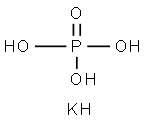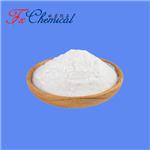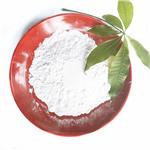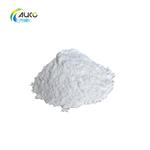Description
Potassium Phosphate Dibasic is a common source of phosphorus and potassium, which is often used as a fertilizer. It is also widely applied in the food industry, such as food additive and electrolyte replenisher for workout supplement. Another usage of Potassium Phosphate Dibasic is as a medicine, who serves as a diuretic or laxative. Besides, it is employed in the production of imitation dairy creamers to prevent coagulation and used in certain powders to prepare beverages. In addition, it is commonly seen in chemical laboratories for producing buffer solutions and trypticase soy agar which is used to make agar plates for culturing bacteria.
Chemical Properties
White crystalline powder
Physical properties
White amorphous powder; deliquesces; decomposes on heating; converts to pyrophosphate when ignited; very soluble in water, 167 g/100mL at 20°C; very soluble in alcohol; aqueous solution slightly alkaline.
Uses
Buffering agent in antifreeze solutions; nutrient in the culturing of antibiotics; ingredient of instant fertilizers; as sequestrant in the preparation of non-dairy powdered coffee creams.
Uses
Potassium Phosphate Dibasic is the dipotassium salt of phosphoric acid which functions as a stabilizing salt, buffer, and sequestrant. It is mildly alkaline with a ph of 9 and is soluble in water with a solubility of 170 g/100 ml of water at 25°c. It improves the colloidal solubility of proteins. It acts as a buffer against variation in ph. For example, it is used in coffee whiteners as a buffer against ph variation in hot coffee and to prevent feathering. It also functions as an emulsifier in specified cheeses and as a buffering agent for processed foods. It is also termed dipotassium monohydrogen orthophosphate and dipotassium monophosphate.
Uses
Potassium Phosphate Dibasic is used as a buffering agent to control the degree of acidity in solutions.
Application
Potassium Phosphate Dibasic can be used as corrosion inhibitor of antifreeze, nutrient of antibiotic culture medium, phosphorus and potassium regulator of fermentation industry, feed additive, medicine, fermentation, bacterial culture and preparation of potassium pyrophosphate, as feed phosphorus supplement additive. Potassium hydrogen phosphate can also be used as water treatment agent, microorganism, fungus culture agent and other purposes. It is often used as analytical reagent and buffer. It is also used in pharmaceutical industry. In food industry, it is used as raw material for preparing alkaline water for pasta products, fermentation agent, flavoring agent, bulking agent, mild alkaline agent for dairy products and yeast food. Potassium Phosphate Dibasic can be used as buffer, chelating agent and analytical reagent. Buffers and pharmaceuticals. Potassium Phosphate Dibasic can be used for boiler water treatment. In medicine and fermentation industry, Potassium Phosphate Dibasic can be used as phosphorus and potassium regulator and bacterial culture medium. It is the raw material for producing potassium pyrophosphate. It can be used as liquid fertilizer and corrosion inhibitor of ethylene glycol antifreeze. Feed grade is used as feed nutritional supplement. Potassium dihydrogen phosphate can be used as a product quality improver, which can improve the complex metal ions, pH value and ionic strength of food, so as to improve the bonding force and water holding capacity of food. China stipulates that Potassium Phosphate Dibasic can be used for fat planting powder, with a maximum dosage of 19.9g/kg.
Preparation
Dipotassium phosphate is prepared by partial neutralization of phosphoric acid with potassium hydroxide, followed by crystallization:
H
3PO
4+ 2KOH →K2HPO
4+ 2H
2O.
Definition
ChEBI: A potassium salt that is the dipotassium salt of phosphoric acid.
General Description
Potassium phosphate dibasic is a useful biological buffer having a pH in the range of 8.5-9.6. Potassium phosphate is present in various forms: monobasic (KH
2PO
4), dibasic (KH
2PO
4), and tribasic (K
3PO
4). Potassium phosphate buffers are widely employed in equilibrium dialysis, high performance liquid chromatography (HPLC) and affinity capillary electrophoresis studies.
References
https://en.wikipedia.org/wiki/Dipotassium_phosphate
https://pubchem.ncbi.nlm.nih.gov/compound/Dipotassium_hydrogen_phosphate#section=Other-Identifiers
https://www.isitbadforyou.com/questions/is-dipotassium-phosphate-bad-for-you




